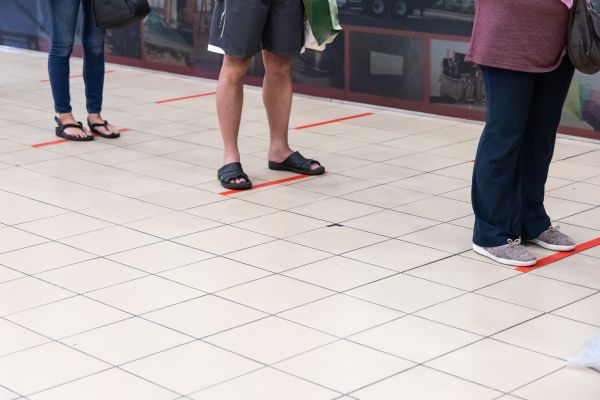Researchers from the University of Oregon and Portland State University have developed a novel method to study the value of and limitations of social distancing to mitigate airborne disease transmission.
Lead author Dr. Hooman Parhizkar, a researcher at the University of Oregon’s Institute for Health in the Built Environment, used sophisticated gas analyzers in a controlled chamber with a participant to measure exhaled volatile organic compounds (VOCs) sourced from breath mints consumed by a participant, to serve as a proxy of bioaerosol emissions at alternate distances (2.5 feet, 5 feet, 7.5 feet, and background). The participant consumed breath mints on a regular cycle, and specific tracer VOCs were used to better understand bioaerosols emissions and dispersion in the room.
The goal was to improve upon the typical engineering assumption of what is known as a “well-mixed room” and provide better characterization of near- and far-field bioaerosol exposures, and therefore risk profiles. The team found that the near-field (2.5 feet) is associated with relatively higher levels of exposure during the first 20-minutes as compared to far-field (7.5 feet), before the bioaerosols are mixed into chamber. This lends credence to social-distancing recommendations.
During the first 20 minutes, the variation of near-field concentrations relative to background was high, presumably due to the exhaled plume slowly expanding from the participant. However, after 25 minutes, the near-field concentrations were only modestly higher than background, thus lending support to the importance of exposure anywhere within the room, including distances greater than six feet. The findings underscore the importance of methods to mitigate exposure risk across the entire room where there may be airborne disease transmission, while still supporting the value of social distancing, especially for shorter exposures nearer the beginning of the exposure period.
“It seems both sides of the argument about whether six-foot circles matter have some merit” said Parhizkar.
“This important nuance about exposure duration and near-field and far-field distances can be helpful to public health officials, building designers, and building owners and operators,” added Dr. Kevin Van Den Wymelenberg, director of the Institute for Health in the Built Environment.
This project was in collaboration with Dr. Richard Corsi and Dr. Elliott Gall at Portland State University and funded by National Institute of Environmental Health Sciences (NIEHs) via the Pacific Northwest Center for Translational Environmental Health Research.
Source: University of Oregon
